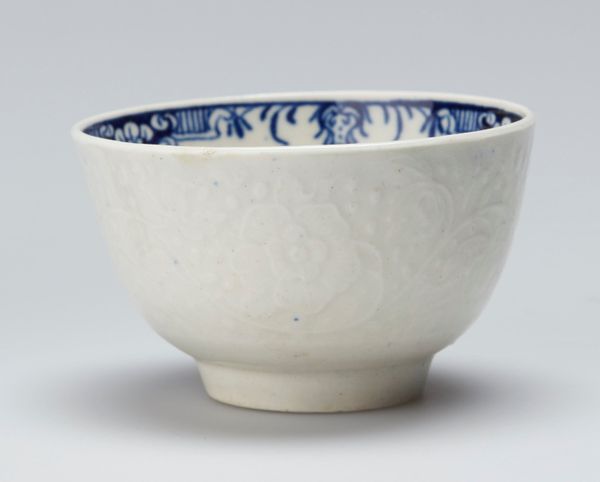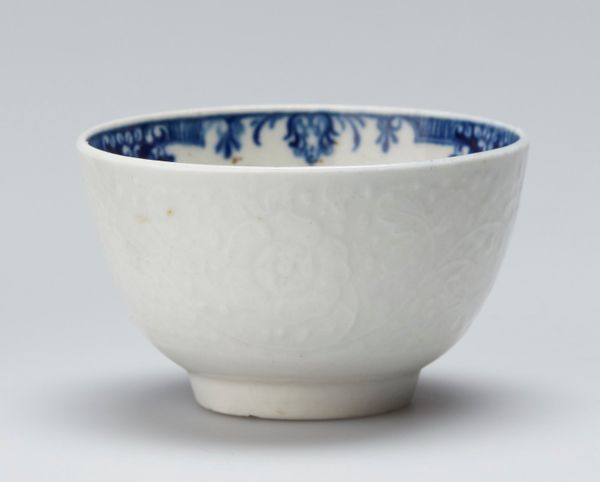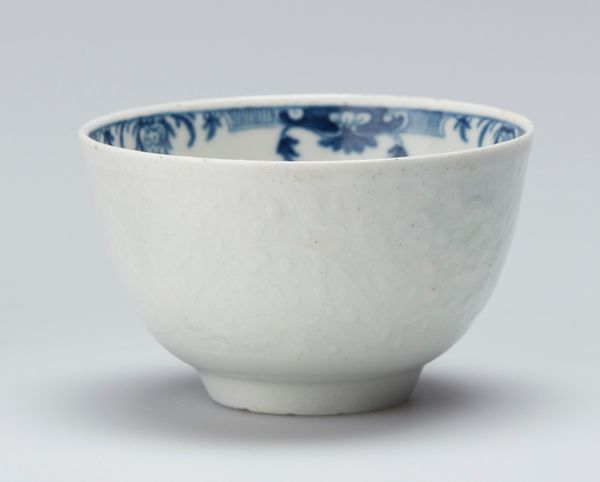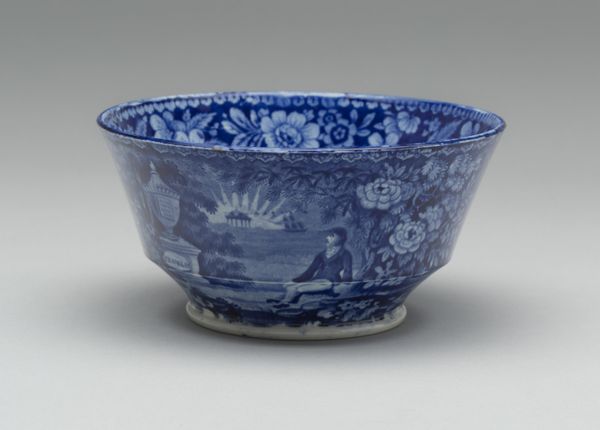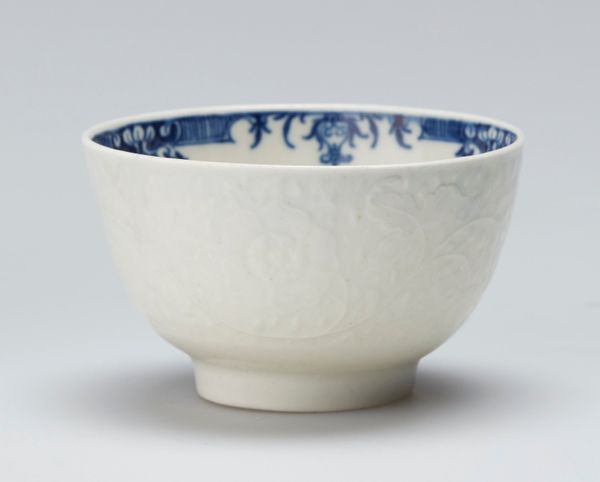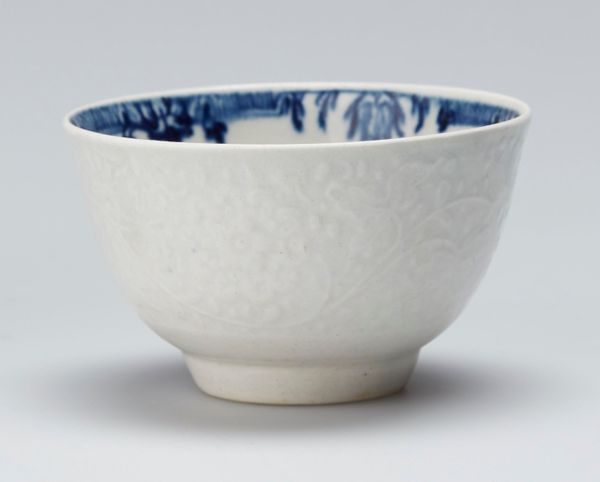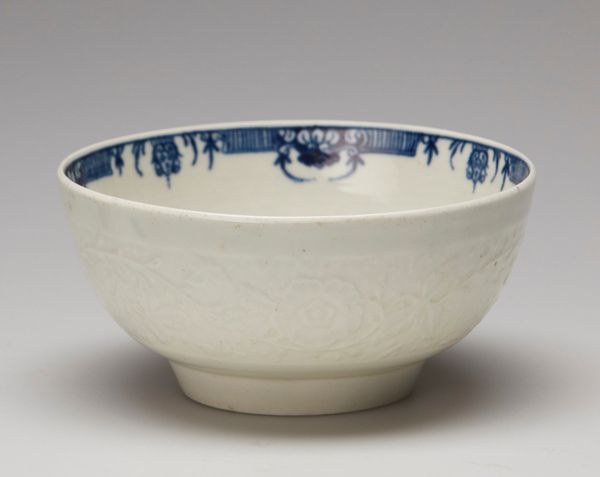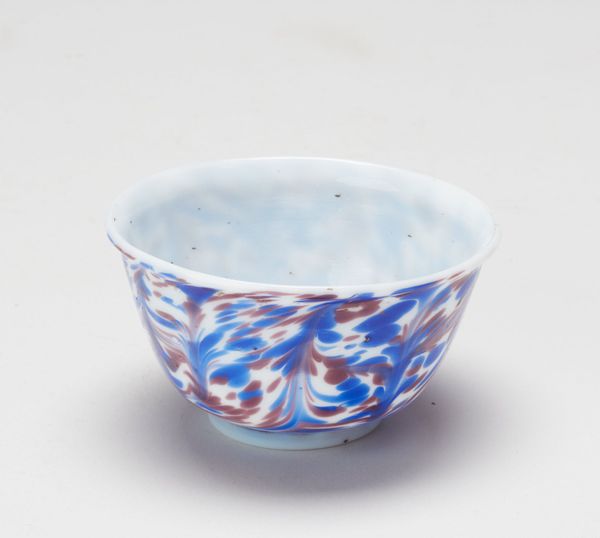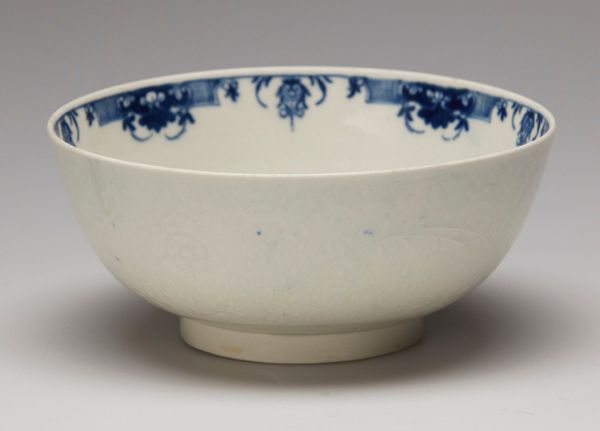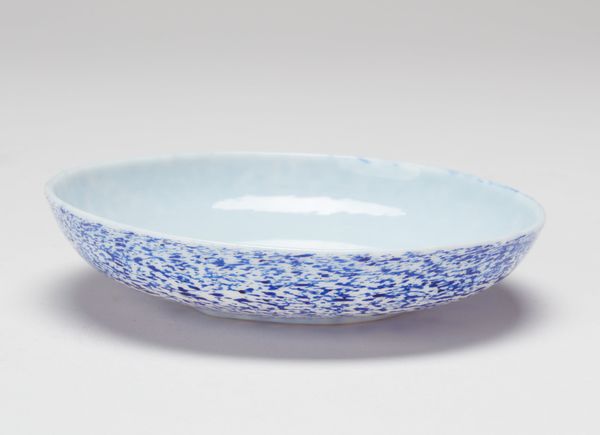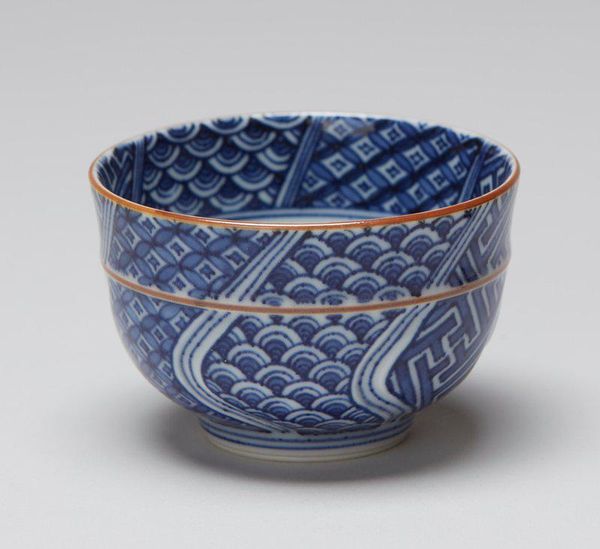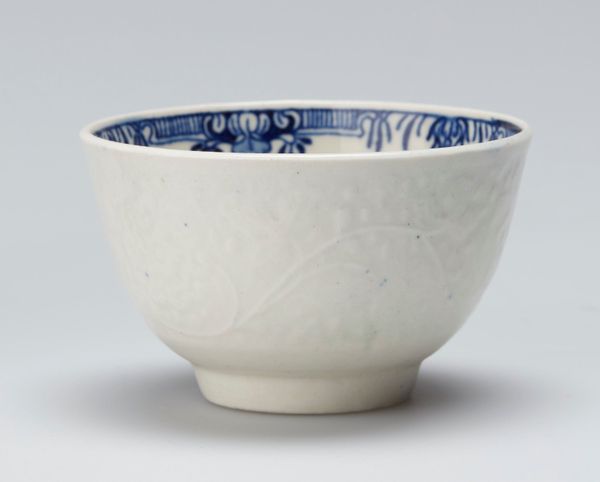
ceramic, glass, sculpture
#
ceramic
#
abstract
#
glass
#
geometric
#
ancient-mediterranean
#
sculpture
#
ceramic
#
decorative-art
Dimensions: Overall: 3 1/8 × 5 1/4 × 5 1/4 in. (7.9 × 13.3 × 13.3 cm)
Copyright: Public Domain
Curator: Welcome. Here we have a "Murrine Bowl with Faces", made between 1875 and 1885 by Vincenzo Moretti. It resides here at the Metropolitan Museum of Art, made with the murrine technique which creates patterns or images in the glass. Editor: It's quite mesmerizing. Like looking into a very still, very stylish ocean, where ancient faces surface momentarily, only to sink back into the swirling blue. Curator: Murrine is an ancient glassmaking technique that dates back thousands of years. Moretti was a pivotal figure in reviving these ancient glass-blowing traditions. These complex patterns demand painstaking layering and precise cutting and fusing. It reflects a broader interest in antiquity that swept across European decorative arts during the late 19th century. Editor: Right. There’s something almost obsessive about it, this controlled chaos of faces floating in a sea of swirling color. It's like he bottled up a whole mythology into a little bowl. Are the faces intended to be specific historical or mythical figures? Or more like abstract entities, spirits perhaps? Curator: While the overall design is abstract, Moretti integrated millefiori, which are glass beads or rods, pre-formed and depicting tiny faces within this bowl. The deliberate revival and manipulation of ancient methods by artists like Moretti helped to assert a Venetian identity within broader European narratives of art history. This gave artisans more credit as key players in a growing cultural and artistic scene. Editor: So, it's a power move in the art world? Claiming their place in history, literally etched into the face of their work. I appreciate that ambition and the fact it resulted in a dazzlingly pretty bowl! There’s such elegance and a quirky spirit here. It's got a definite sense of humor. Curator: Absolutely, a synthesis of artistry and strategy within 19th-century revivalism. Editor: That it is, and quite pleasing to view as well.
Comments
No comments
Be the first to comment and join the conversation on the ultimate creative platform.
